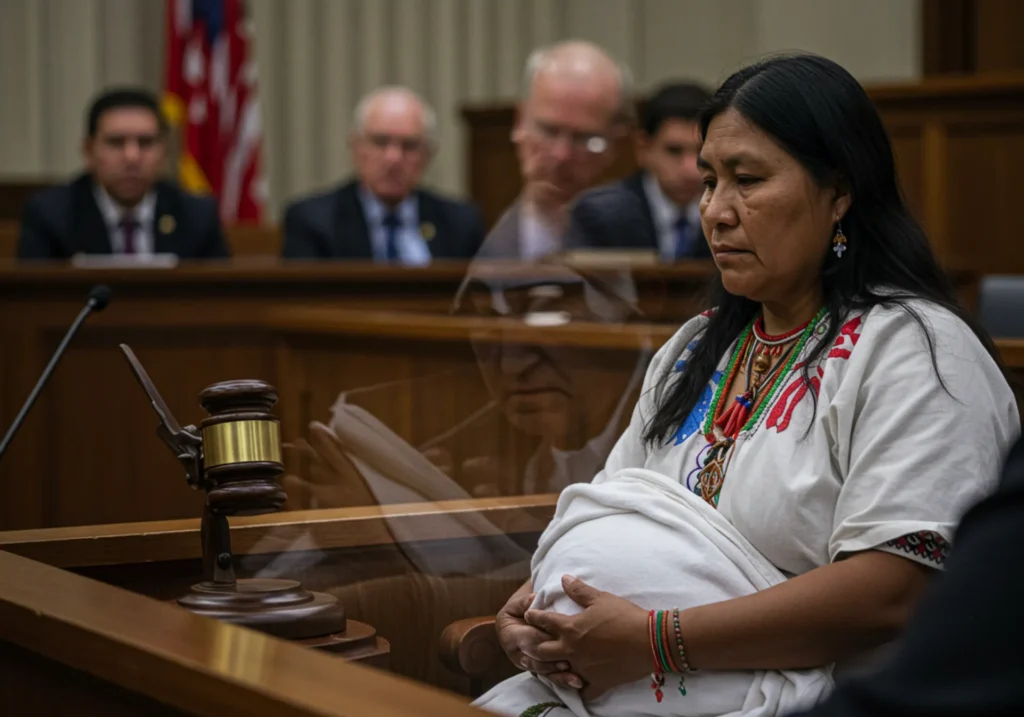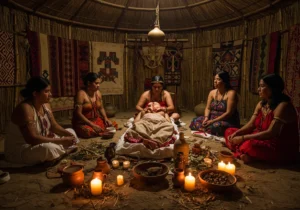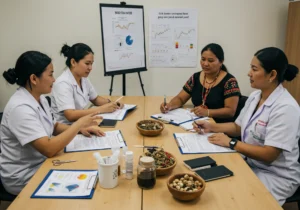Across the globe, traditional birth practices remain deeply connected to culture, spirituality, and community life. For many families, birth is not only a medical event but also a cultural ceremony that affirms identity and honors ancestral knowledge. Yet in many regions, these traditions face growing tension with modern laws and regulations. Midwives and traditional birth attendants are often caught between preserving cultural practices and complying with regulatory frameworks designed for hospital-based maternity systems.
This article explores key legal conflicts, their impact on indigenous and local communities, and how midwives can engage in advocacy to protect both safety and cultural rights.
The Cultural Significance of Traditional Birth Practices
Indigenous and traditional birth practices vary widely but often share common values. They emphasize continuity of care, connection to land and community, and respect for rituals that frame birth as a sacred passage. For generations, traditional midwives and attendants have supported families outside of formal health systems, sometimes with practices that blend herbal medicine, massage, storytelling, and ceremony.
For many communities, especially indigenous groups, the right to choose traditional birth is closely tied to cultural autonomy and self-determination. Restrictive regulations that criminalize or marginalize these practices are seen not only as medical overreach but as an erosion of cultural rights.
Examples of Legal Conflicts Around the World
In some regions, midwives practicing traditional methods face prosecution, fines, or bans if they are not licensed under biomedical frameworks. One well-documented case occurred in Hawai‘i, where a lawsuit challenged laws restricting Native Hawaiian birth attendants. Plaintiffs argued that the laws violated cultural rights and created barriers to traditional care. The legal battle highlighted the tension between regulatory intent to ensure safety and the rights of indigenous people to preserve cultural practices.
Similar conflicts appear in Latin America, where indigenous parteras (traditional midwives) provide essential care in rural areas yet face scrutiny from authorities. In some African and Asian countries, regulations have attempted to phase out traditional attendants in favor of “skilled birth attendants.” While the goal is to reduce maternal mortality, critics argue that excluding traditional midwives ignores their cultural importance and often leaves rural families without accessible care.
The Impact on Maternal Health & Cultural Rights
Restricting traditional birth practices can have unintended consequences. Communities may lose access to trusted birth attendants, leading to unsafe home births without skilled support. Families may also experience cultural disconnection when forced into clinical systems that do not honor their values. These conflicts can widen mistrust between health systems and indigenous groups.
On the other hand, unregulated practices do raise legitimate safety concerns. Lack of emergency backup, inconsistent training, and absence of documentation can increase risks for mothers and newborns. The challenge lies in balancing cultural rights with safety standards that protect maternal and infant health.
Ethical & Professional Tensions for Midwives
Midwives often find themselves at the center of this debate. Licensed midwives may be asked to attend births in traditional contexts but risk legal liability if regulations prohibit certain practices. Others may want to advocate for cultural rights but face pressure from professional bodies to adhere strictly to biomedical protocols.
These tensions raise important ethical questions: Should cultural autonomy ever outweigh medical safety? Can legal frameworks adapt to include both? And what is the role of midwives in bridging the gap between communities and state authorities?
Strategies for Advocacy & Integration
Midwives and allied organizations are increasingly advocating for inclusive approaches that respect both tradition and safety. Some strategies include:
- Policy Engagement: Working with lawmakers to create licensing pathways that recognize traditional knowledge alongside biomedical competencies.
- Coalition Building: Forming alliances between indigenous leaders, midwives, and human rights groups to ensure diverse voices are heard in regulatory debates.
- Evidence Gathering: Documenting maternal outcomes from traditional practices to inform policy with data rather than assumptions.
- Training & Dialogue: Offering spaces where traditional attendants and biomedical midwives can share knowledge, improving trust and mutual respect.
In some countries, integrated models have emerged. For example, collaborative programs allow traditional birth attendants to work alongside licensed midwives, providing cultural support while ensuring access to emergency referral systems. These models show that safety and tradition do not have to be mutually exclusive.
Case Studies & Success Stories
There are growing examples of legal reforms that successfully integrate traditional midwifery into regulated health systems:
- Mexico: Training programs for parteras have been recognized by local health ministries, blending cultural practices with modern safety protocols.
- New Zealand: Māori midwifery traditions have been incorporated into midwifery education, affirming indigenous knowledge within professional standards.
- Canada: Indigenous midwifery services are recognized and funded in some provinces, emphasizing cultural continuity alongside clinical care.
These case studies demonstrate that regulatory recognition is possible when cultural rights are prioritized and when midwives advocate collectively.
Recommendations for Midwives & Organizations
For midwives engaged in this issue, practical steps include:
- Stay informed about local laws and regulatory changes that affect birth practices.
- Engage in respectful dialogue with traditional birth attendants to understand their perspectives.
- Advocate for inclusive policies that respect cultural rights while addressing safety concerns.
- Document and share stories that highlight the importance of cultural practices in maternal health.
- Partner with advocacy groups to amplify midwives’ voices in legal and policy debates.
Conclusion: Toward Balance & Respect
The conflict between traditional birth practices and modern regulation is not simply a legal issue; it is a reflection of deeper questions about identity, rights, and the role of culture in health. Midwives stand at the intersection of these debates, uniquely positioned to advocate for balance. By engaging in respectful dialogue, supporting evidence-based integration, and amplifying the voices of indigenous communities, midwives can help ensure that both cultural traditions and maternal safety are honored.
Ultimately, the future of midwifery lies in creating systems that embrace diversity rather than suppress it. When laws respect both tradition and safety, families can choose birth practices that align with their values without sacrificing well-being. That is the vision midwifery advocacy can bring to reality.





